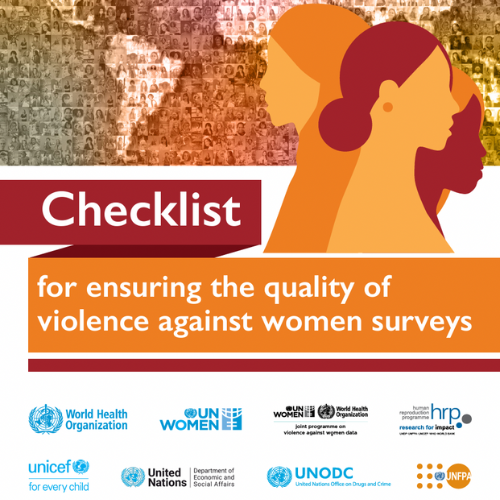Knowledge about how to produce valid and reliable data on the prevalence of intimate partner violence and other types of violence against women has expanded in recent decades. Surveys that measure the prevalence and consequences of violence against women, including intimate partner violence, are specialized and need technical support and guidance to follow best practice. However, not all surveys follow best practice. This makes national and sub-national data on the prevalence of intimate partner violence difficult to compare across settings. Some surveys are subject to the risk of bias, including the risk of underestimating the prevalence.
This checklist, produced by the World Health Organisation with support from UNFPA and UN partner agencies and programmes, is designed to help national statistics offices and other national research and data institutions and research teams to think through the steps needed to produce high-quality survey data on intimate partner violence — from the planning stages through to analysis, report write-up and dissemination of accurately interpreted findings. Most surveys on violence against women measure multiple types of violence, and many of the generic recommendations in this checklist are applicable to various forms of violence against women. However, this checklist addresses the specificities of measuring the prevalence of intimate partner violence — one of the most common forms of violence women are subjected to globally. A checklist to address the specificities of measuring the prevalence of non-partner sexual violence will be produced in the future. This checklist is meant to be used by teams planning dedicated surveys on violence against women as well as surveys with a module on violence against women within a larger survey, as in the Demographic and Health Surveys. Funders and other organizations commissioning surveys on violence against women may also find this checklist useful to inform their work.




